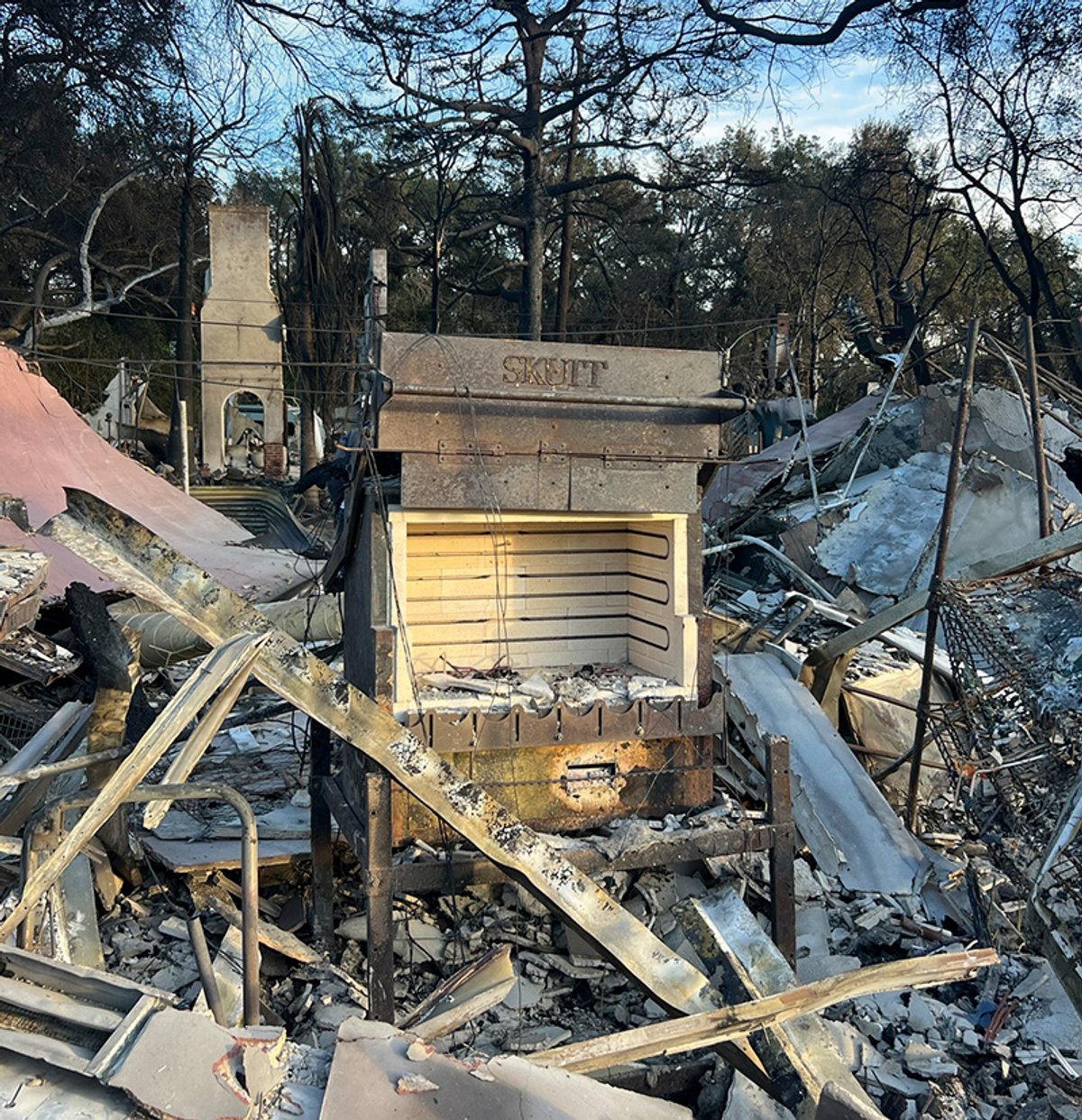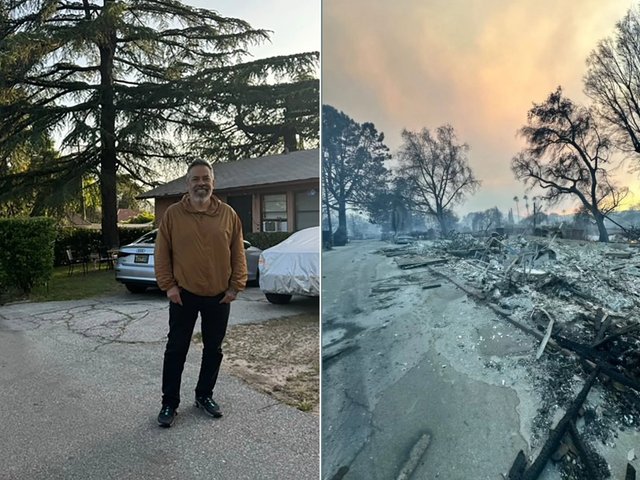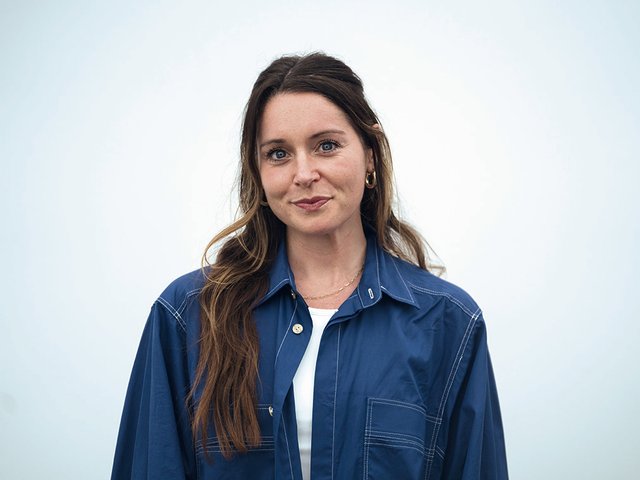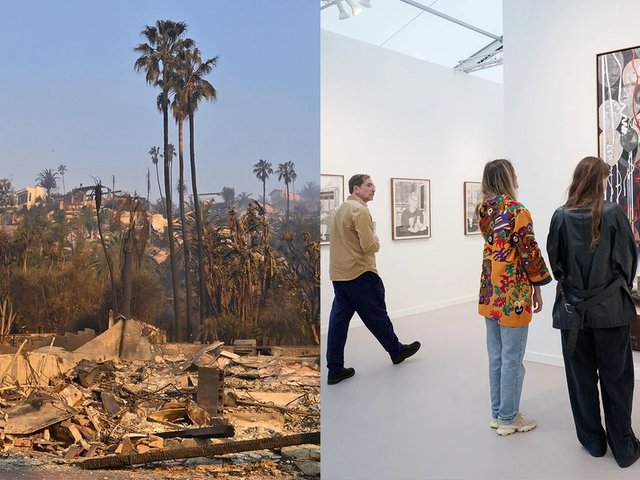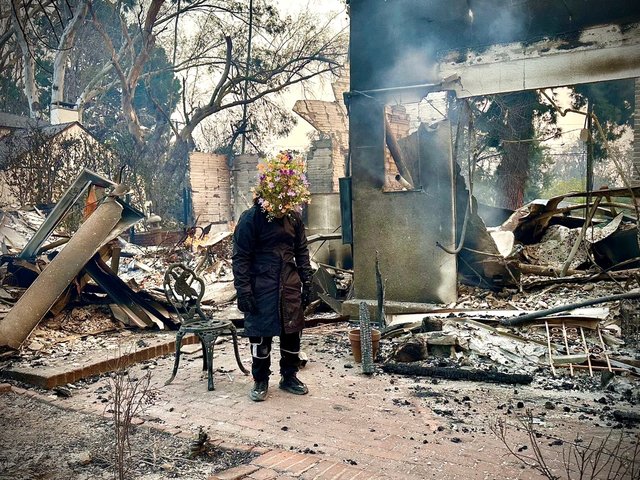During last month’s Los Angeles wildfires, the loss of any home was tragic. For artists who had studios at their homes, the conflagrations were doubly devastating. It meant losing their workplace, equipment, supplies, archives, works in progress and finished. It meant the loss of livelihoods and, for Kelly Akashi, the potential loss of a solo show at Lisson Gallery, which was timed to this month’s Frieze Los Angeles fair (20-23 February). Most of the work she made for that exhibition went up in smoke.
Akashi’s home and studio in Altadena fell to the Eaton blaze, which started the evening of 7 January and rapidly burned through more than 9,000 structures, causing 17 deaths. Altadena is an older neighbourhood of tree-lined streets pressed against the foothills of the San Gabriel Mountains, so quiet it might be described as sleepy. Akashi evacuated on 8 January, quickly packing an overnight bag and her cat.
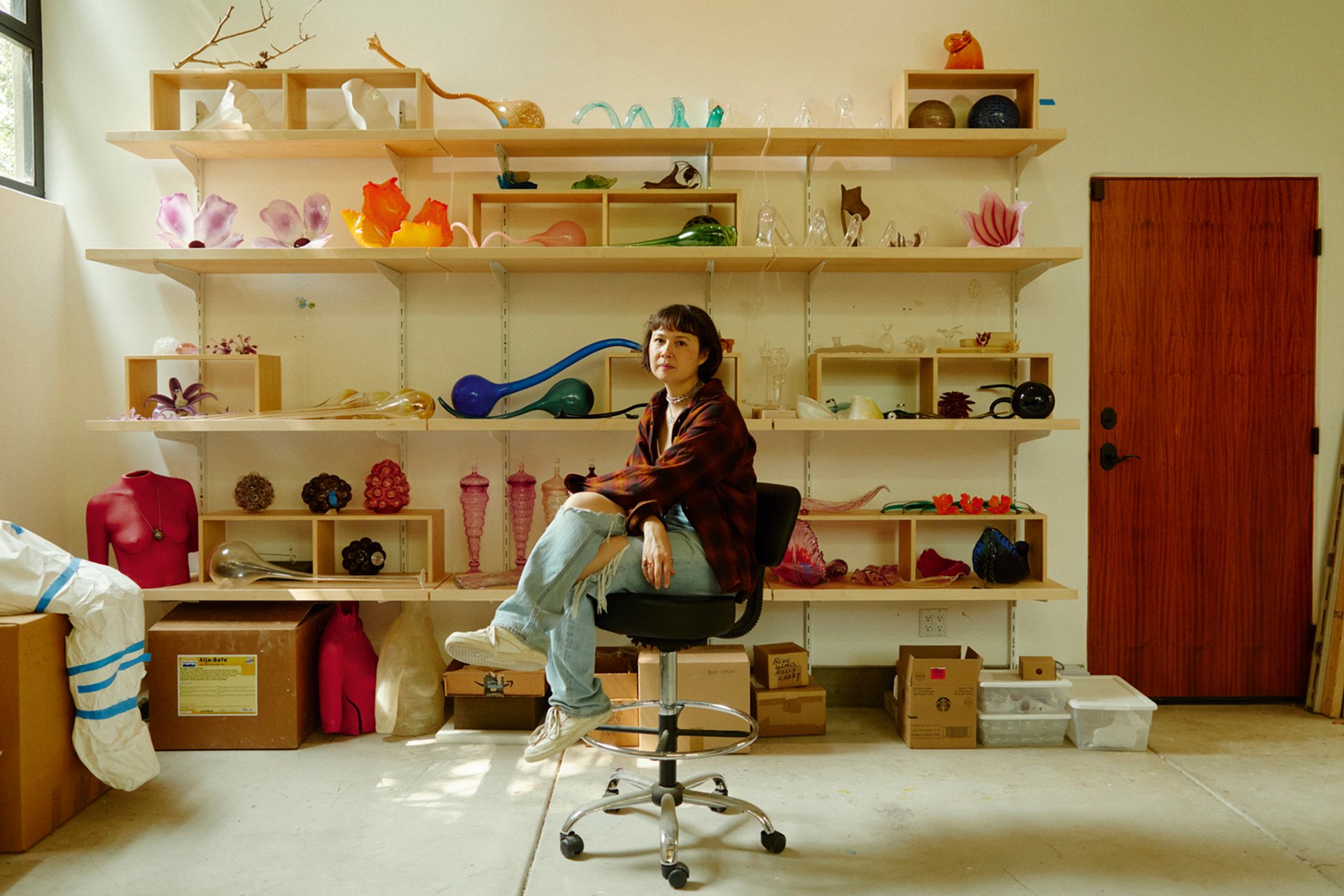
The artist Kelly Akashi in her Altadena studio Brad Torchia
Akashi, like the other artists The Art Newspaper spoke to, was able to move to housing provided by friends or family. But she knows this is a short-term solution and anticipates moving again before she finds new long-term housing. The artist’s house and studio also had a special lineage, having previously belonged to the veteran artists Jim Shaw and Marnie Weber. As someone born and educated in Los Angeles, Akashi says, “It was really important to have this historic studio.”
Right now, finding a place to work is critical. Akashi’s show at Lisson, originally scheduled to open in late January, has been postponed. On Instagram she has published an “ask” list that includes equipment, materials and a place where she can work with glass and metal—both of which require high heat.
Second time unlucky
The painter Christina Quarles also lived in Altadena and had already suffered fire damage to her main house last year, which was disruptive enough. Her studio, in a building on the same lot, had remained intact, but picking up the brushes again did not come easy.
“After the fire last year, it was really heartbreaking to try to make art or try to work on any deadline or anything like that,” Quarles says. As a result, she was only able to make four paintings last year. And now she cannot go back to her studio because the area has been locked down by the National Guard. This will be followed by a series of safety checks by other agencies before she can regain access to her property.
“Basically, after the fire last year, I put off everything for a year,” Quarles says, adding that she was due to have an exhibition at Hauser & Wirth in Los Angeles this month. For the time being, she, her partner and their young daughter have moved to a friend’s place in Joshua Tree. After that they have another place lined up in Miracle Mile, in mid-city Los Angeles, but she misses Altadena.
Eleven paintings were all that the artist Adam Ross was able to salvage on a hurried return visit the morning after he and his wife evacuated their property in Altadena. They lived on half an acre with three older houses and a custom-built studio.
“We come back up our driveway, and our house is on fire and the studio’s just catching on fire,” he says. “The studio’s locked and we smashed the glass to get in. I got most of my new work out. I lost every drawing I ever made, my sketchbooks. We got our cat, the 11 paintings, the clothes on our back and the stuff in the safes.” He adds that his wife, the sculptor Caitlin Ross, lost all her work. “The thinking has been, we’re not dead.”
Fortunately for Ross, his in-laws have a studio in nearby Sierra Madre where he and his wife (and cat) are staying. Space is tight though, and the Rosses are eager to return home. But they will not be allowed back to their neighbourhood to live or rebuild until after the state does extensive clean-up work.
Kathryn Andrews lost her home in the Palisades fire, having just moved to the area a year ago. A friend called to warn her about a plume of smoke near her house, and when she went outside it was “massive”. The evacuation notice came shortly thereafter and she left.
“I was unable to take any of the art, I took my dogs, I packed a suitcase in five minutes,” she says. Fortunately for her, her studio is elsewhere and is intact. “Those artists whose studio also burned, that’s even more devastating, it impacts their ability to earn.”
“In Los Angeles everyone is so spread out geographically due to the size of the city—the distances, the traffic,” Andrews says. “Despite that or maybe because of that, the art world is surprisingly connected. I began posting about what was happening, and as the fires kept cropping up we were all calling each other.” One person she began talking to was her fellow artist Andrea Bowers, who is known for making work with strong activist themes. Andrews says, “We began talking about the need to help other people.”
Connecting and organising
Andrews, Bowers and a handful of others quickly launched Grief and Hope, a grassroots fundraising effort to help artists and art workers who have suffered losses from the fires. They set an initial goal of raising $500,000, which they reached in two weeks and have increased to $750,000. Donations are processed through the crowdfunding platform GoFundMe and funnelled through the non-profit organisation The Brick. The response has been very generous, including from artists living elsewhere like Rashid Johnson, Elizabeth Peyton and Mark Ryden.
There has been a groundswell of groups and organisations pitching in to help artists in different ways, including the Getty-led L.A. Arts Community Fire Relief Fund, with an initial funding of $12m. Kathryn Andrews’s gallery, David Kordansky, is offering a selection of her work for sale with 100% of proceeds going to the artist. (Artist Ruby Neri is also a beneficiary of that programme.)
Meanwhile, Akashi is eager to return to what is left of her home and studio, especially to see if any of her work survived. “I’ve already purchased a nonferrous metal detector, which detects bronze and brass, not steel,” she says. She is fiercely determined to make new work, adding to a handful of extant pieces including bronzes and pedestals at foundries, for her new show.
“We would like to open the show by Frieze,” she says. She hopes the week of fairs and events in late February will provide a show of support for the Los Angeles art scene and the artists who have helped make it a cultural capital.


